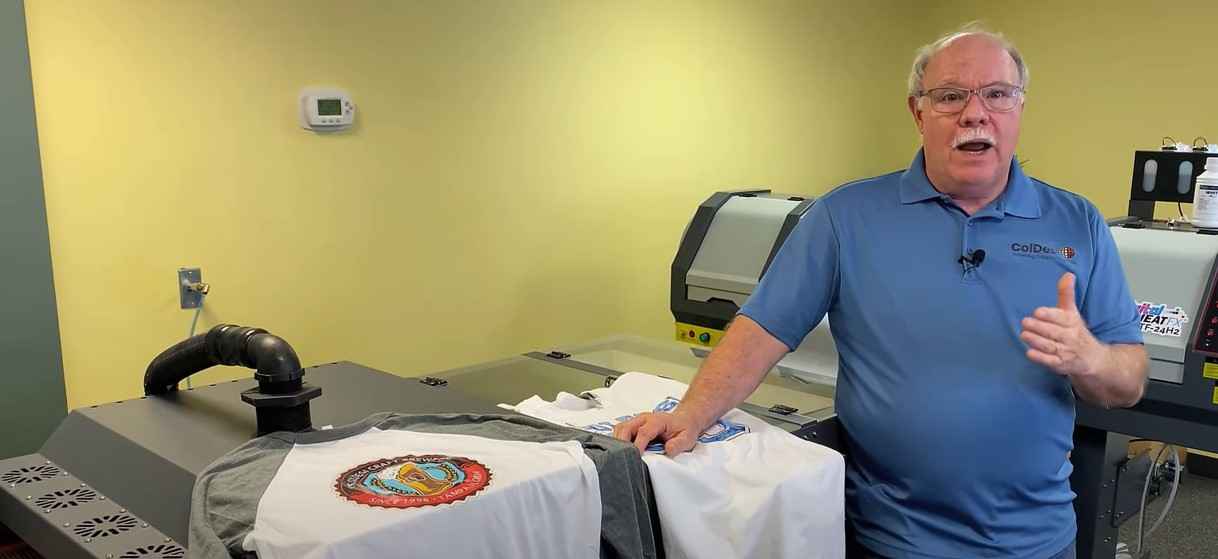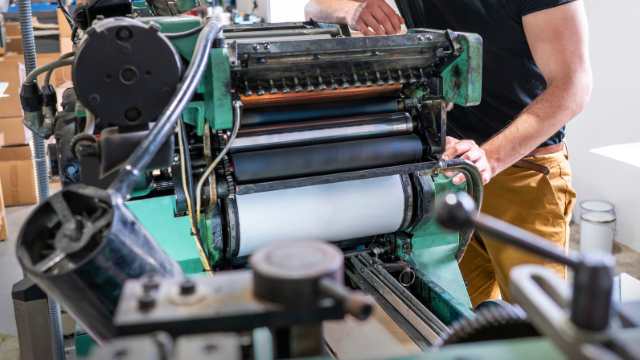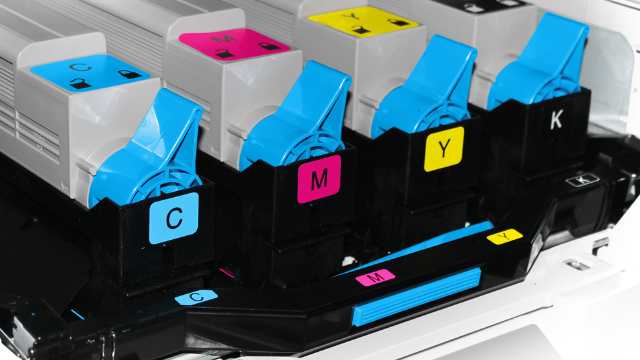DTF powder, used in Direct to Film printing, is not considered highly toxic. Proper handling minimizes any potential health risks.
Direct to Film (DTF) printing is growing in popularity for its ability to transfer detailed designs onto various fabrics. In this printing method, DTF powder plays a vital role by helping the ink adhere to the transfer film before being pressed onto the garment.
Is DTF Powder Toxic? While the powder is not inherently harmful, like any chemical substance, it requires careful handling in well-ventilated areas to avoid respiratory discomfort. Safety data sheets provided by manufacturers can offer specific guidance on handling procedures.
For businesses and individuals using DTF technology, adhering to recommended safety practices ensures a safe printing environment, maintaining the health of operators and end-users alike.
The Rise Of DTF Printing

DTF printing is revolutionizing the apparel industry. This method provides high-quality, durable prints on a vast array of fabrics. As businesses take this technology, understanding the components, such as DTF powder, becomes vital.
What Is DTF Powder?
DTF powder plays a essential role in the Direct to Film (DTF) printing process. It’s usually a white granular substance applied to the printed ink. The powder helps the design adhere to the fabric during the curing process. Is it toxic? Not typically. Reputable manufacturers create non-toxic, eco-friendly DTF powder that’s safe for use in printing clothes.
The Dtf Printing Process
The steps in DTF printing are relatively straightforward:
- Print the design onto a special film.
- Apply the DTF powder to the printed film.
- Cure the powder with heat to activate it.
- Transfer the design onto the fabric.
- Cure the fabric to set the design.
This process allows for vibrant designs that are flexible and durable. It ensures that garments withstand washing and wearing, preserving the quality of the print over time.
Evaluating DTF Powder Composition
Understanding what goes into the products we use is necessary for safety and health. Direct To Film, or DTF, powder is often a topic of concern. Let’s break down its composition.
Ingredients In DTF Powder
DTF powder plays a pivotal role in the printing process, ensuring designs adhere well to fabrics. The ingredients can vary, but common elements include:
- Polyester Resin: Bonds the print to the fabric.
- Epoxy: Adds durability to the print.
- Adhesion Promoters: Help the print stick properly.
- Plasticizer: Makes the print flexible.
Chemical Properties Of Dtf Powder
The chemical properties influence performance and safety. Key aspects include:
| Property | Description |
|---|---|
| Melting Point | Defines at what temperature the powder will bond to fabric. |
| Thermal Stability | Important for enduring high-temperature processes. |
| Toxicity | Impact on human health and environment. |
| Solubility | Reacts and dissolves in certain solvents. |
Exposure to certain chemical compounds can be harmful. Keep safety data sheets handy and understand the risk of each ingredient.
Toxicity Concerns In DTF Powder
Toxicity concerns around DTF (Direct to Film) powder are raising questions for many users and businesses. DTF powder is a key component in Direct to Film printing, a process popular in textile printing. The safety of this substance matters to both the industry and the end-user.
Potential Health Risks
Working with DTF powder can pose various health risks. Inhalation or skin contact are primary concerns. The powder’s chemical ingredients could affect lung function or lead to skin irritation.
- Respiratory Issues: Prolonged inhalation might damage lung tissue.
- Skin Irritation: Direct skin contact could cause allergic reactions.
- Eyes and Mucous Membranes: Particles might irritate sensitive areas.
Regulations And Safety Standards
Strict regulations govern the use of substances like DTF powder. Compliance with safety standards is important.
| Authority | Regulation |
|---|---|
| OSHA | Mandatory Material Safety Data Sheets for chemicals |
| EPA | Guidelines on the disposal of chemical waste |
| EU Standards | REACH compliance for chemical safety |
Always use personal protective equipment (PPE) and ensure proper ventilation when handling DTF powder.
Comparative Analysis
Comparative Analysis sheds light on various aspects of printing technologies. Among these, the focus often shifts to the safety profile of Direct to Film (DTF) powder. This analysis considers DTF powder in comparison to other printing methods. Let’s explore their safety.
DTF Powder vs. Other Printing TechnologiesDtf Powder Vs. Other Printing Technologies
Examining DTF powder against other technologies helps us understand its place in the printing world. We compare it to screen printing, inkjet, and laser printing. DTF powder stands out for its vibrant colors and durability. Yet, questions about its toxicity often arise. Does it pose risks similar to its counterparts?
| Technology | Application | Ease of Use | Toxicity Concerns |
|---|---|---|---|
| DTF Powder | Textiles | High | Under Review |
| Screen Printing | Textiles, Paper | Moderate | Chemical Inks Involved |
| Inkjet | Paper, Plastic | High | Varies by Ink |
| Laser | Multiple Surfaces | High | Toner Dust Concerns |
Toxicity Levels Across Printing Mediums
Different printing mediums come with varied toxicity levels. It’s necessary to consider these levels. They are especially important when creating products for sensitive use. These include children’s clothing and food packaging.
- DTF Powder: Requires proper handling.
- Screen Printing Inks: May contain harmful solvents.
- Inkjet Inks: Range from non-toxic to mildly toxic.
- Laser Toner: May release fine particles.
It’s clear that diligence when selecting a printing method impacts both health and environment. Users must follow safety guidelines. They should use protective gear when necessary. This ensures the safe use of printing technologies.
Safe Handling Practices
Dry transfer film (DTF) powder requires careful handling to ensure safety. While not inherently toxic, improper management can lead to health risks. To maintain safety, adhere to the following safe handling practices for DTF powder:
Personal Protective Equipment (ppe)
The use of personal protective equipment (PPE) is essential when handling DTF powder. PPE minimizes direct contact and prevents inhalation of particles.
- Safety goggles: Shields eyes from dust
- Face masks: Prevents powder inhalation
- Gloves: Protects skin from irritation
- Protective clothing: Keeps powder off skin and clothes
Best Practices For DTF Powder Management
Optimal management of DTF powder is key to maintaining a safe environment. Follow these best practices:
- Store in a cool, dry place away from direct sunlight.
- Label containers clearly with safety information.
- Use with adequate ventilation to avoid airborne particles.
- Keep food and drink away to prevent ingestion.
- Clean up spills immediately using a vacuum with a HEPA filter.
Industry Perspectives On DTF Powder

As the printing industry evolves, Direct to Film (DTF) printing has become a hot topic. With its rise, a key focus has emerged around the safety of DTF Powder.
Manufacturers’ Stance On Safety
Manufacturers prioritize safety and transparency. They often publish safety data sheets for their DTF powders, which list ingredients and any potential hazards. These sheets show that manufacturers craft DTF powders to be non-toxic when used correctly.
- Regular quality checks ensure consistent safety standards.
- DTF powders typically comply with global safety regulations.
Consumer Reports And Feedback
Users play a critical role in assessing product safety. Consumer reports and reviews reflect real-world usage. Users note that following proper guidelines results in a safe printing process.
| Consumer Feedback | Concern | Satisfaction Level |
|---|---|---|
| Easy to Use | Minimal | High |
| No Irritation | None Reported | High |
| Effective Results | None Reported | High |
Overall, reviews suggest that with proper handling, DTF powder use is considered safe in the printing industry.
Investigating Exposure Scenarios
Let’s dive deep into the hidden risks of DTF powder. People may come into contact with it in more ways than we realize. It’s necessary to understand the different ways this can happen. This helps keep everyone safe.
Workplace Exposure To DTF Powder
Workers in factories and print shops might handle DTF powder often. They need to know about the risks. Employers must provide safety training and protective gear.
- Inhalation: Breathing in the powder is risky.
- Direct Contact: Powder on the skin can cause irritation.
- Accidental Ingestion: Keeping food away is important to avoid swallowing powder.
It’s key to keep workspaces well-ventilated. Regular health check-ups are also a good idea.
Long-term Effects Of Exposure
Long-term exposure to DTF powder is serious. Studies show it can lead to chronic health issues. Symptoms might not show up right away, making it tricky to spot.
| Exposure duration | Possible Effects |
|---|---|
| Short-term | Respiratory irritation, coughing |
| Medium-term | Skin conditions, allergy-like reactions |
| Long-term | More serious lung issues, possibly cancer |
Staying informed and proactive about health safety is the best defense.
Moving Towards A Safer Future

Moving towards a safer future means finding environmental solutions in every industry. The printing world also faces challenges, particularly regarding Direct to Film (DTF) powder. Traditional DTF powders contain chemicals that could harm both people and the planet. However, dedication to greener alternatives is at an all-time high. Innovations now pave the way for safer practices in textile printing.
Advancements In Non-toxic Dtf Alternatives
Strides in technology signal a significant shift to non-toxic DTF alternatives. These advancements are important for reducing hazardous waste and protecting workers. Recent options in the market offer powders derived from sustainable sources. They don’t compromise on quality. The best part? They provide brilliant colors while safeguarding health and the environment.
- Biodegradable powders ensure eco-friendly decomposition
- Water-based inks reduce harmful emissions
- Low-temperature curing cuts down energy consumption
The Role Of Research And Development
Research and development play a key part in the transition to safer DTF powders. Through constant innovation, R&D teams work tirelessly to create solutions that leave minimal environmental footprints. They develop alternatives that not only meet industry standards but also set new benchmarks for safety and sustainability.
- Investing in green chemistry to find harmless substances
- Testing new formulas for biocompatibility and endurance
- Partnering with environmental agencies to align with guidelines
Frequently Asked Questions Of Is DTF Powder Toxic
Is DTF Powder Dangerous For Health?
DTF powder, used in direct-to-film printing, can pose health risks if not properly handled. Inhalation of fine particles may cause respiratory issues. Therefore, it’s important to use it in well-ventilated areas and wear appropriate protective gear.
Can DTF Powder Affect The Environment?
DTF powder itself is not eco-friendly and can harm the environment if not disposed of correctly. It should be collected and disposed of in line with local regulations to minimize environmental impact.
How To Handle DTF Powder Safely?
Always handle DTF powder in a well-ventilated space with protective equipment, like masks and gloves. Avoid direct skin contact and inhalation by following safety data sheet instructions.
Are There Alternatives To DTF Powder?
Yes, there are alternatives to DTF powder, such as traditional screen printing and DTG (Direct-to-Garment) printing. Each method has its pros and cons regarding quality, cost, and environmental impact.
Conclusion
Navigating the safety of DTF powder requires caution. Our detailed exploration confirms it can pose health risks if mishandled. For safe use, always follow manufacturer guidelines and consider professional advice. Prioritize your health; choose non-toxic alternatives where available. Stay informed and stay safe.